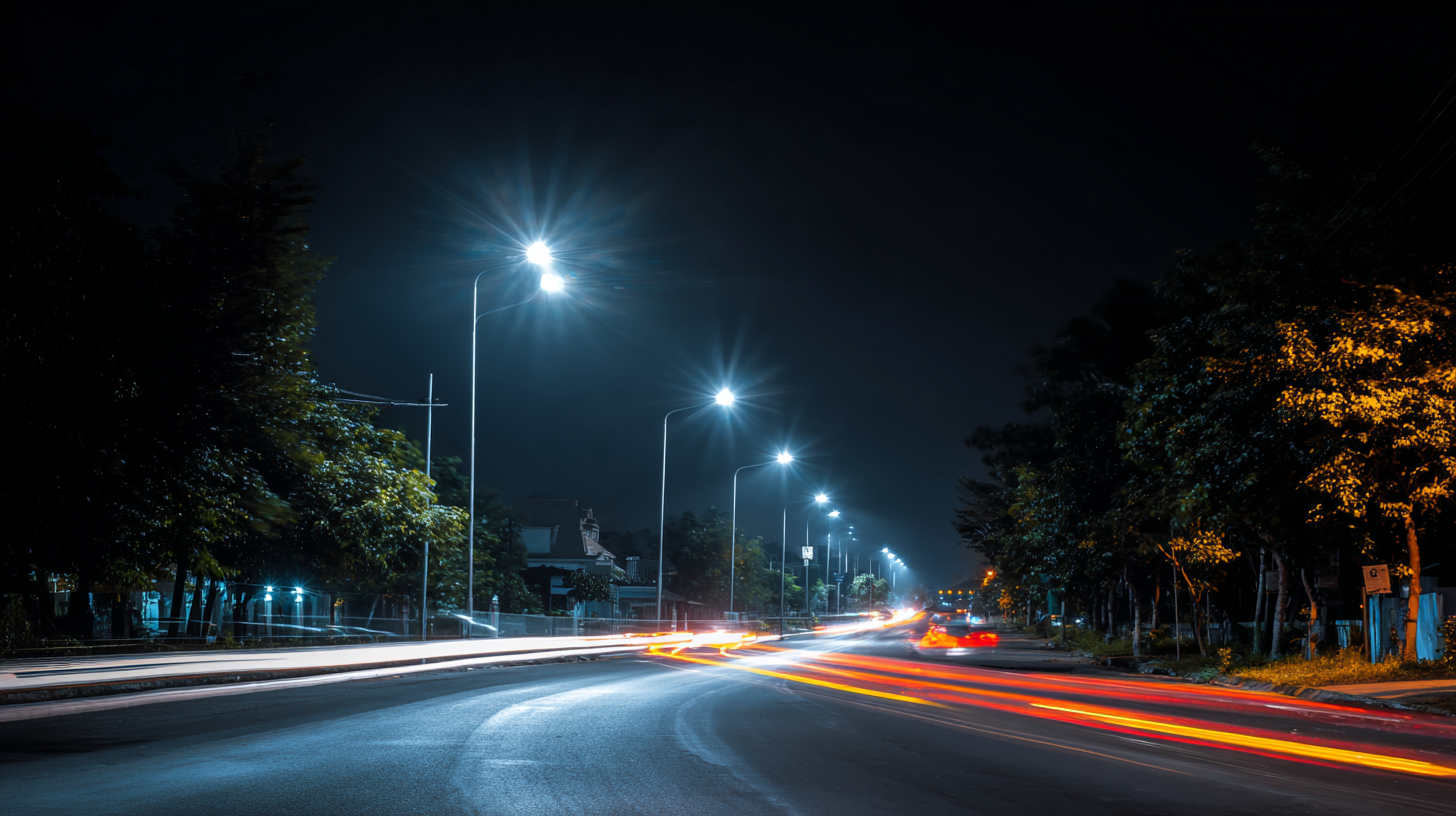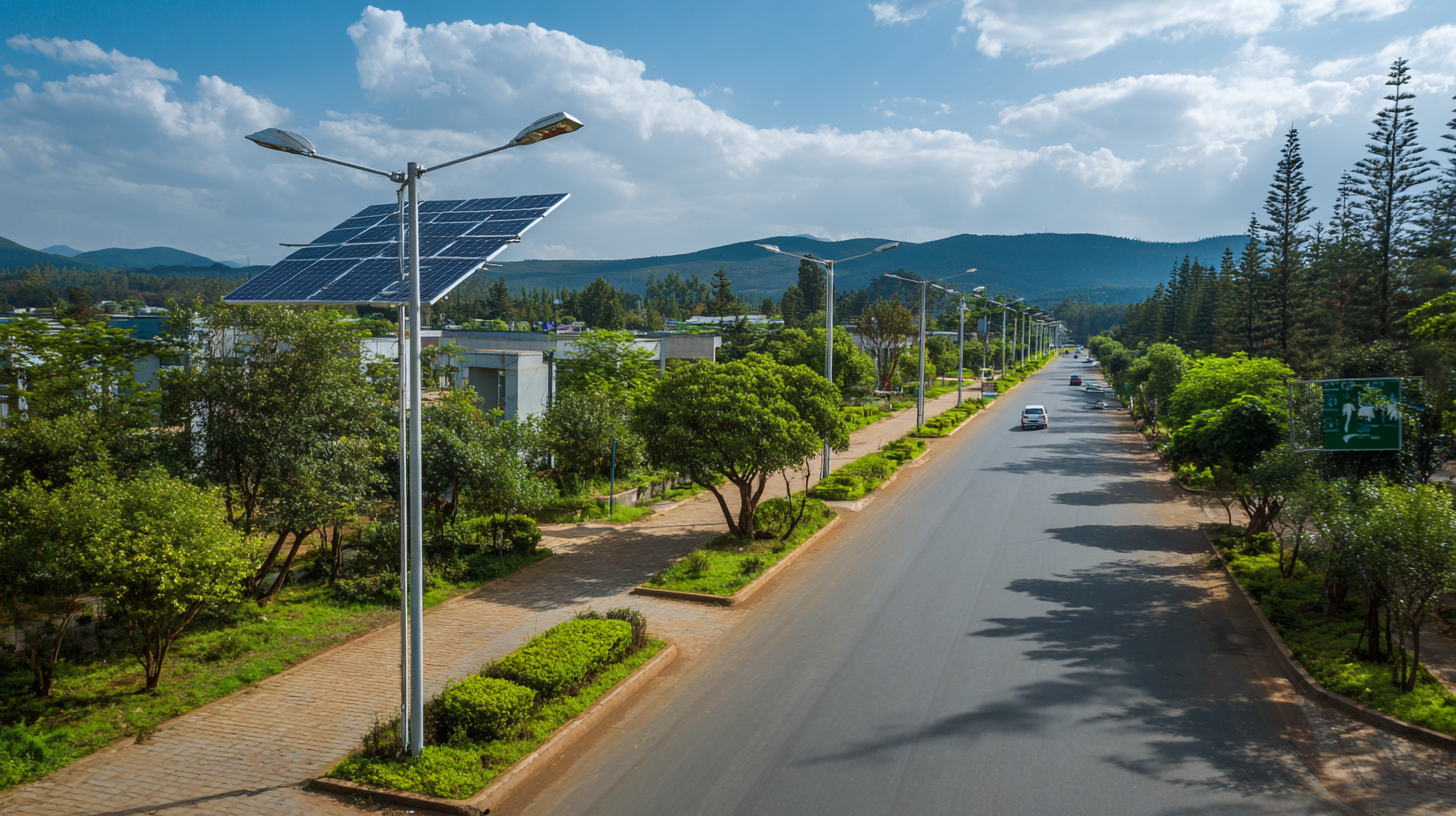2025 Guide: How to Choose the Best Solar LED Street Light for Your Community Needs
As communities around the globe increasingly prioritize sustainable solutions, the adoption of solar LED street lights has emerged as a promising strategy to enhance urban infrastructure while minimizing environmental impact. According to a report by the International Energy Agency (IEA), the use of solar lighting can lead to a reduction in carbon emissions by approximately 1.6 billion metric tons annually by 2030, making it a critical element in the fight against climate change. This growing trend is not only environmentally significant but also economically beneficial, with reports from Markets and Markets projecting the global solar street lighting market to reach $7.68 billion by 2025, reflecting a CAGR of 20.5% from 2020.

When selecting the best solar LED street light for community needs, various factors must be meticulously considered. These include the illumination requirements, battery capacity, solar panel efficiency, and local climatic conditions, all of which can significantly affect the performance and sustainability of the lighting solution. Furthermore, understanding the long-term cost savings associated with solar LED systems, which can operate for up to 25 years with minimal maintenance, can significantly influence the decision-making process for municipal and community leaders. By exploring these essential aspects, communities can make informed choices that not only enhance public safety but also contribute to a greener future.
Understanding the Benefits of Solar LED Street Lights for Communities
Solar LED street lights have emerged as a transformative solution for communities seeking sustainable and cost-effective lighting options. One of the primary benefits of these lights is their ability to harness solar energy, which significantly reduces electricity costs. By utilizing renewable resources, communities can decrease their carbon footprint and promote environmental health. This aligns with global efforts to combat climate change, making solar LED lights not only a practical choice but also a socially responsible one.
Additionally, solar LED street lights enhance public safety by providing bright and reliable illumination in public spaces. Unlike traditional street lights, which may rely on time-consuming electrical infrastructure, solar lights can be installed quickly and in a variety of locations. Their high visibility aids in crime prevention and ensures safer environments for pedestrians at night. Many solar lights also come equipped with smart technology, allowing for motion detection and adaptive brightness. This feature not only extends battery life but also provides tailored lighting solutions based on community needs.
Key Features to Consider When Selecting Solar LED Street Lights
When selecting solar LED street lights for your community, several key features must be considered to ensure the best fit for your needs. First and foremost, the brightness of the LED lights is crucial. Look for options that provide adequate lumen output to illuminate roads and pathways effectively, with considerations for different areas requiring varied brightness levels. Additionally, evaluating the color temperature can enhance visibility; warmer light temperatures are more inviting, while cooler temperatures can improve visibility for safety.
Another important aspect is the solar panel efficiency and battery capacity. Ensure the solar panels have a high conversion rate to harness maximum sunlight, especially in regions with less sunshine. The battery should be capable of storing enough energy to power the lights throughout the night and into cloudy days. Furthermore, consider the durability and weather resistance of both the panels and the lights themselves. Opt for materials that can withstand harsh environmental conditions to prolong the lifespan of your installation. These features collectively contribute to a well-functioning solar LED street lighting system that meets community needs effectively.
Evaluating Energy Efficiency and Sustainability in Solar Lighting Solutions
Choosing the right solar LED street lights for your community involves a thorough evaluation of energy efficiency and sustainability. As cities face growing energy demands and environmental concerns, solar street lighting has emerged as a practical solution. Effective solar lights harness renewable energy from the sun, reducing reliance on the grid and minimizing carbon footprints. When assessing options, consider the efficiency of the solar panels and the LED technology, as these factors significantly influence performance and durability.

Tips: Look for products that have a high lumen output per watt to ensure brightness without excessive energy consumption. Additionally, explore options designed for longevity, such as those with advanced battery management systems that extend life cycles and efficiency.
Sustainability goes beyond just energy usage. Assess the materials used in the street lights, ensuring they are recyclable and produced with minimal environmental impact. Brands committed to sustainable practices not only contribute to a greener future but also set an example within the community. By prioritizing energy efficiency and eco-friendly manufacturing processes, communities can enjoy effective lighting solutions that align with global sustainability goals.
Comparing Costs: Initial Investment vs Long-Term Savings in Solar Street Lights
When considering the implementation of solar LED street lights in a community, understanding the financial implications is crucial. The initial investment for solar street lights may appear higher compared to traditional lighting systems due to the costs of solar panels, batteries, and LED technology. However, this upfront expenditure indicates a long-term vision for sustainable energy solutions. Many communities underestimate the savings potential; solar street lights can drastically cut down on electricity bills and maintenance costs over time, leading to a favorable return on investment.

Long-term savings also extend to environmental benefits, as solar street lights reduce carbon footprints, contributing to a greener community image. By avoiding rising utility rates and reducing dependency on fossil fuels, the longevity of solar lights becomes increasingly evident. In addition, factors such as reduced maintenance associated with the durability of LED technology further enhance long-term cost-effectiveness. Thus, although the upfront costs may be a barrier, the long-term savings and environmental advantages make solar LED street lights a financially sound choice for communities looking to modernize their lighting while promoting sustainability.
Community Involvement: Gathering Feedback and Preferences for Street Lighting Choices
When selecting the best solar LED street lights for a community, it is essential to actively involve residents in the decision-making process. Gathering feedback and preferences from community members not only encourages engagement but also ensures that the chosen lighting solutions meet the specific needs of the area. Surveys, community meetings, and online forums can be effective tools in collecting detailed opinions and insights on what features residents prioritize, such as brightness, color temperature, and energy efficiency.
Involving the community in the selection process fosters a sense of ownership and pride in the outcomes. When residents feel their voices are heard, they are more likely to support the implementation of the lighting project and embrace its benefits, such as increased safety and enhanced aesthetics. By taking the time to understand community preferences, project planners can tailor their choices to ensure the installed solar LED street lights not only illuminate streets effectively but also align with the values and preferences of the people they serve. This collaborative approach ultimately enhances the project's success and acceptance within the community.
Related Posts
-

What is Solar Street Light and How It Revolutionizes Urban Lighting Solutions Globally
-

Exploring Solar Lights Market Trends at the 138th China Import and Export Fair 2025
-

Unlocking the Advantages of Choosing LED Solar Lights for Your Business Needs
-

The Future of Industrial Lighting How LED High Bay Fixtures Revolutionize Workspaces
-

Discover the Magic of LED Wall Technology in Modern Event Productions
-

How to Choose the Right LED High Bay Fixtures for Your Commercial Space
